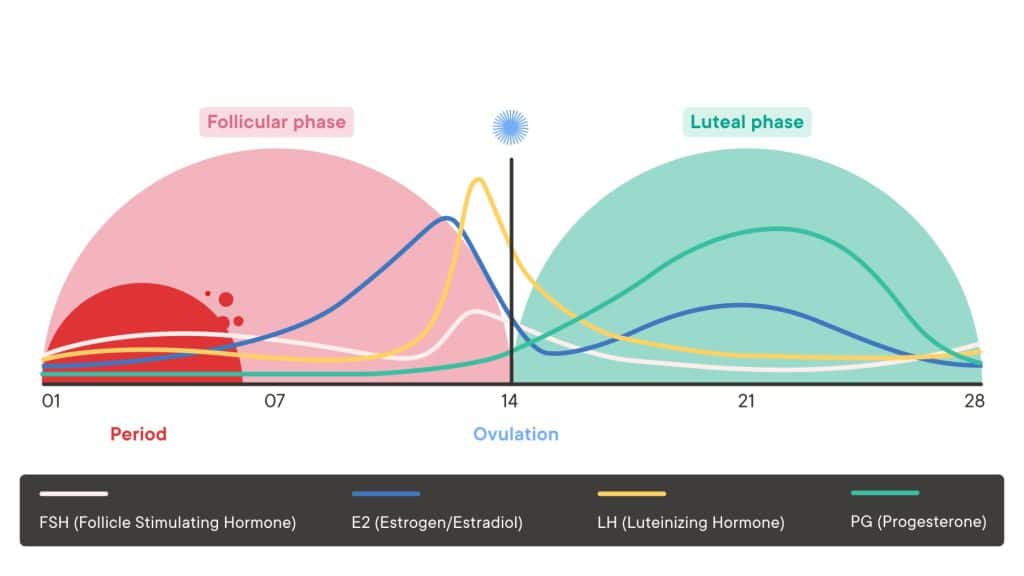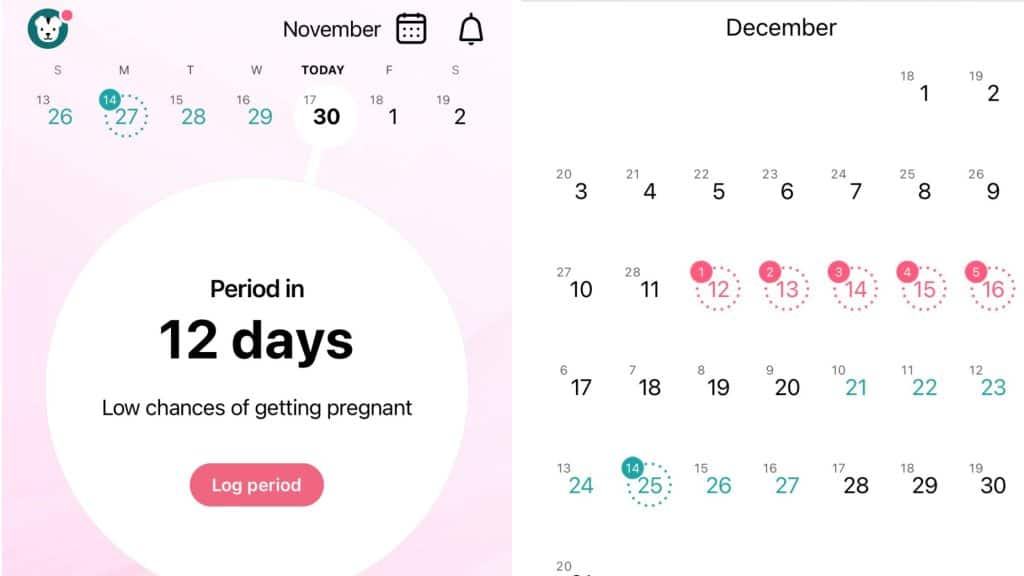Cycle syncing has become a popular trend but like most trends we may be taking it too far.
As a performance dietitian, I encourage my clients to have a thorough understanding of how their body works so that they can optimize performance and overall well-being. That includes understanding how their menstrual cycle and hormones impact their nutrition, exercise, and recovery.
This article will help you have a better understanding of the menstrual cycle hormones and phases, tracking your menstrual cycle, what cycle syncing is, and how to apply cycle syncing to your nutrition, exercise, and sleep based on evidence-based science.
Hey, I’m Jenn, a Registered Dietitian who has a passion for helping individuals fuel, think, and move towards the best versions of themselves without sacrificing their relationship with food. If you want practical, evidence-based nutrition advice to improve your performance and wellness — Learn how I can help.
Let’s dive in…
Understanding the Menstrual Cycle
Starting with an understanding of the menstrual cycle and the hormones will help you establish a baseline for your unique menstrual cycle. That way you will be able recognize menstrual cycle irregularities or disorders.
The hormones involved in the menstrual cycle have a significant impact on a woman’s physical and emotional health as they rise and fall throughout each menstrual cycle. For instance, changes in estrogen and progesterone levels can affect mood, energy levels, and sleep patterns.
Key Female Hormones Involved in the Menstrual Cycle
The menstrual cycle is regulated by a variety of hormones, including:
- Follicle-Stimulating Hormone (FSH): Produced by the pituitary gland, FSH encourages the growth of follicles in the ovaries.
- Luteinising Hormone (LH): Also produced by the pituitary gland, LH triggers ovulation, which is when the ovary releases an egg.
- Estrogen: Produced primarily by the developing follicles in the ovary, estrogen is responsible for the growth and thickening of the uterine lining.
- Progesterone: Produced by the corpus luteum, the follicle’s empty structure after ovulation, progesterone helps maintain the uterine lining in readiness for the implantation of a fertilized egg.

Phases of the Menstrual Cycle
While the average menstrual cycle is 28 days, the menstrual cycle does vary in length. A typical cycle lasts between 21-35 days and has four distinct phases:
- Menstrual Phase or Early Follicular Phase (Days 1-6): Your period is the start of the menstrual cycle which begins when an egg from the previous cycle hasn’t been fertilized, causing levels of estrogen and progesterone to drop. The thickened lining of your uterus is shed causing a combination of blood, mucus, and tissue are released from the uterus.
- Follicular Phase (Days 6-14): The follicular phase technically starts on the first day of your period and ends when you ovulate. The pituitary gland releases FSH to stimulate the production of 5-20 follicles to get one mature egg. The maturing follicle sets off a surge in estrogen that thickens the lining of your uterus.
- Ovulation (Days 13-15): Rising estrogen levels trigger the release of LH which starts ovulation. Ovulation is when your ovary releases a mature egg and when you could get pregnant. The egg travels down the fallopian tube toward the uterus to be fertilized by sperm.
- Luteal Phase (Days 15-28): After the ovary follicle releases its egg, it changes into the corpus luteum. This structure releases hormones, mainly progesterone and some estrogen, keeping your uterine lining thick and ready for a fertilized egg to implant. If you do get pregnant, your body will produce human chorionic gonadotropin (hCG) to keep the lining thick. If you don’t get pregnant, the corpus luteum will shrink away and be resorbed. This leads to decreased levels of estrogen and progesterone, which causes the onset of your period and a new cycle.
How to Track Your Menstrual Cycle
If you’re want to start tracking your cycle, the first step is to find a method that works for you and that you can stick to consistently.
One option is to keep things simple by using a planner or calendar. Mark the start of each period, how many days your period lasts, and any symptoms you experience during the entirety of your menstrual cycle. The symptoms might include mood, cramping, energy levels, hunger levels, cervical fluid, etc.
If you want a more automated approach, consider downloading Flo. This app allows you to track your cycle, menstrual flow rate, sex drive, mood, symptoms, vaginal discharge, pregnancy testing, ovulation testing, physical activity, oral contraceptive use, notes, and basal temperature. It’s a simple, free app that I have been using for years to track my cycle.

Benefits of Tracking Your Menstrual Cycle
One of the main benefits of tracking your cycle and symptoms is to establish a baseline of what to expect during each phase of your cycle. Tracking your cycle helps explain fluctuations in energy levels, mood, and irritability and other symptoms throughout the month.
Once you have a baseline of how your menstrual cycle impacts your performance and wellness, you can make necessary adjustments to your nutrition, exercise, sleep, and recovery. Those adjustments may help you improve your overall well-being and performance.
What is Cycle Syncing
Cycle syncing involves adapting your nutrition, exercise, sleep and recovery routines to the different phases of your menstrual cycle.
Although there are no studies regarding cycle syncing, it has been established that hormone fluctuations during the menstrual cycle can impact energy, mood, appetite and sleep.
Applying Cycle Syncing in Daily Life
It’s important to note that the study of nutrition and performance related to the menstrual cycle is still in its early stages. So before we delve into the subject, keep in mind that research is constantly evolving. I will continue to update this article and keep you updated on my social media pages as the research continues to grow.
Cycle Syncing Diet
At this point, we have barely scratched the surface of what the menstrual cycle means for performance nutrition. Studies have found a lot of mixed results. That is why I recommend my clients to listen to their hunger and fullness cues, build balanced meals and snacks, and honor their cravings.
For most women, having enough energy to sustain normal physiologic function on top of exercise is the first step. Low energy availability can cause a plethora of problems to skeletal, cardiovascular, gastrointestinal, endocrine, and neurological function.
After you have adequate energy to have “normal” menstrual cycles, you can focus on adding nutrition strategies to help you perform optimally during the different menstrual cycle phases.
Menstrual Phase Nutrition
During your menstrual phase, focus on adding in iron and vitamin C rich foods. Iron helps replace some of the iron lost due period bleeding. Iron rich foods include red meat, dark leafy greens, fortified cereals and dark chocolate. Vitamin C helps in the absorption of iron. Citrus foods, red peppers, berries, kiwi, and bell peppers are good sources of food.
Adding in Omega-3 fatty acid foods such as salmon, flax seeds, and tree nuts may help reduce inflammation and menstrual cramping.
Follicular Phase Nutrition
During the follicular phase, glycogen storage in the body for females is lower than the other phases.
Which is why it is important to eat a carbohydrate rich meal or snack prior to exercise no matter what phase you are in. Carbohydrates are the body’s preferred fuel source during exercise. Focus on easily digestible carbohydrates that are low in fiber and have a high glycemic index in the 30 minutes to 1 hour before exercise.
A general rule of thumb is about 30-60 grams of carbohydrates per hour of exercise in order to maintain blood glucose levels.
As with any performance nutrition recommendations, these are guidelines and need to be individualized based on your activity and intensity. If you would like nutrition periodization recommendations to boost your performance and wellness, schedule a 15 minute nutrition discovery call today!
Luteal Phase Nutrition
Premenstrual Syndrome (PMS) is an issue that brings physical, emotional, and behavioral symptoms during the luteal phase.
Research is still sparse but some nutrition interventions are shown as possibly effective in helping relieve some symptoms.
Calcium and vitamin D are associated with the reduced risk of PMS. Various studies show the importance of vitamin D in female reproduction. Vitamin D plays a role in calcium homeostasis, sex hormone fluctuations, and neurotransmitter function.
Magnesium supplementation may be effective in reducing cramping, PMS symptoms, and menstrual migraines. If you want to try a magnesium supplement, I recommend a magnesium glycinate supplement.
Cycle Syncing Exercise
The research on the effects that the different menstrual phases have on performance is still unclear and mixed. This is why it is important to track your menstrual cycle and symptoms. It will help you get a better understanding of how your body feels during exercise and what symptoms you experience during different phases.
50-84.6% of female athletes from various sports did report that their training and performance was negatively impacted by certain menstrual cycle phases. So if you experience performance disruptions during your menstrual cycle, you are not alone.
The menstrual phase and late luteal is where they experienced the most negative effects. A common complaint was fatigue. That could be due to lower levels of serotonin from low estrogen levels. During these times, rest and recovery are key.
A review stated exercise performance might be reduced during the menstrual phase and enhanced during the other menstrual cycle phases. However, we need more studies to get a clear understanding of how the menstrual cycle impacts performance.
The best cycle syncing exercise advice I can give you is to remember all of our bodies are all different. You may not experience the same symptoms or the degree of severity of menstrual cycle symptoms as someone else. Be mindful of how you feel and your symptoms while exercising. It will help you adjust your training, recovery, and diet to boost performance no matter what phase you are in.
Cycle Syncing Sleep
Research indicates that sleep patterns change throughout the menstrual cycle, with most sleep disturbances occurring during the luteal phase.
Women tend to experience increased sleep onset and awakenings, as well as lower sleep quality during the luteal phase compared to the follicular phase.
In the luteal phase women experience elevated core body temperature, which disrupts sleep quality. During the luteal phase, progesterone levels are higher, resetting the body’s thermostat to a higher temperature, making it more challenging to achieve REM sleep.
While you are in the luteal phase it’s important to practice good sleep hygiene. This can include avoiding blue-light devices before bed, practicing a pre-bedtime routine, and consuming foods that may increase sleep quality.
Certain foods, such as tart cherry juice and pistachios, enhance the production of important hormones and neurotransmitters, like melatonin and tryptophan, which help promote sleep onset.
Final Thoughts on Cycle Syncing
So as you can see it’s understandable to take cycle syncing advice with a grain of salt. Research will continue to evolve and we will have better insight on how to optimize performance and nutrition for each phase.
The key takeaway from the cycle syncing trend should be to start tracking your cycle and symptoms. That will help you become mindful of how your unique menstrual cycle affects your performance, energy, and nutrition.
As research evolves, I promise to keep you updated. For now, continue to listen to your body, eat balanced meals and snacks, and prioritize sleep and recovery.
Are you ready to stop stressing about your diet and learn realistic strategies that work? Schedule a free 15 minute call today!
Jenn Fink is a licensed and board-certified Registered Dietitian Nutritionist based in Minnesota. Her goal is to help busy people and families prioritize their health by living a balanced lifestyle and feed their families flavorful meals without spending hours in the kitchen. Jenn is passionate about all things food-related and enjoys making complex science easy to understand for her clients and readers.

